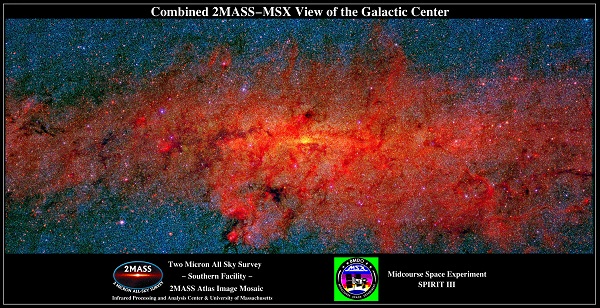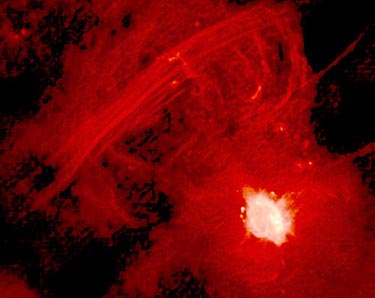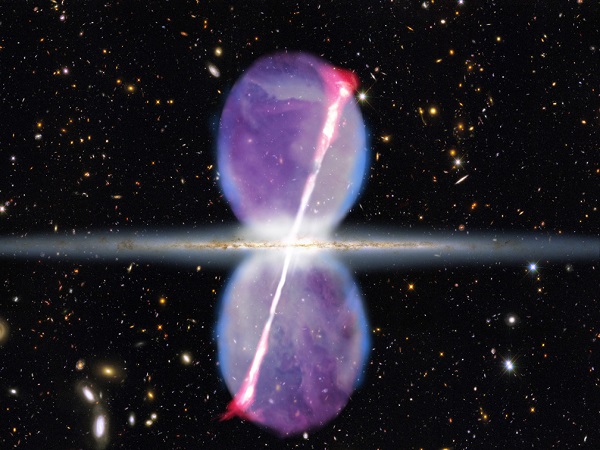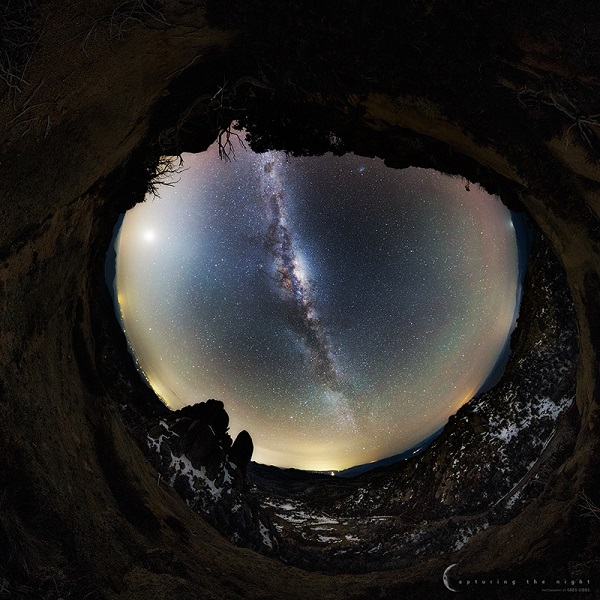|
The Milky Way GalaxyIf you are standing in your bedroom, you cannot take a picture of your whole house. That is the same problem we, on Earth, have had trying to see what part of the universe we are in. For many years it was assumed that the universe was everything we could see when we looked at the night sky. Some objects up there moved across the sky -- comets, meteors, even planets. Some objects only moved very slowly. Was that because the universe was circling around us, or were we moving? Through the years, both due to mathematics and then to much more sophisticated technology, we have been able to piece together, bit by bit, a lot more about what is up there in the night sky, and the place we have in it. It was not until the 1920's with Edwin Hubble's work, that astronomers got the shock of finding out that we were not seeing what we thought we were seeing. First of all, we thought the Milky Way "system" was the whole of the universe. We were somewhere in it. Everything we saw, then, was considered part of the Milky Way. Hubble's work showed, to the astonishment of astronomers, that the spiral nebulae were at immense distances, and not part of the Milky Way at all. As they examined Hubble's work and continued it, they realized these nebulae were their own star systems. That introduced the idea of separate "island universes," as other galaxies were first called. Since then, our knowledge has expanded exponentially regarding what is out there in the night sky. Our Milky Way Galaxy is only one of maybe billions of galaxies in the universe. But it's our home galaxy, so that is where we will start. Let's look at what we see, and what our ancestors saw as well:
We have learned that what we can see when we look up at the night sky is only the stars in our local arm. We can't even see a good part of our galaxy, let alone the whole thing. The special telescopes make the below illustrations possible and, even then, we are supplying a few guesses along with our knowledge. We recently discovered an extension to the Outer Arm which was hidden before due to the fact that the center of our galaxy hides what is behind it from us. Clouds of hydrogen gas and star clusters are localized to the spiral arms of the galaxy. They do not occur between the spiral arms. So what we can do is look for the signals from those hydrogen clouds which give signals in the radio region of the spectrum. When these are charted, we get this sort of diagram:
As you can see above, we cannot discern through the center of our galaxy using this method, and so there is a 'cone' of darkness. Another method of finding out more about our own galaxy is through X-rays and infrared rays. Both allow us to see through the center into the 'dark cone.' When we plot star clusters using this method, we find this sort of thing:
When it is all put together, here is the conclusion about what we look like:
By using X-ray and infrared telescopes as well as radio telescopes, we have been able to see a lot more of what our home galaxy looks like. The infrared and radio telescopes allow us to penetrate the dust and gas that obscures what is behind them, so we can see what is there. X-ray telescopes add additional information because some of the x-ray length waves can penetrate when others can't.
As you can see, there is a lot more to the Milky Way Galaxy than just a bunch of stars rotating around a center. Look at the diagrams below and you will see even more:
note: a "kpc" is a kilo parsec (about 3260 light years) There are four identifiable areas in a galaxy: the spiral arms, the galactic disk, the galactic halo, and the galactic center. The spiral arms extend out from the galactic center, or nucleus. The brightness of the disk tends to obscure them a bit. As you can see from several of the illustrations above, there are 'arms' in our galaxy. Each of the arms has a name.
We are in the Orion Spur of the Sagittarius Arm. When we look at our night sky, on clear nights, we can see part of the Perseus Arm, part of the Sagittarius Arm, the Orion Spur, and the part of the Crux-Scutum Arm which circles close to us. What we see in and near the cores of galaxies, including our own, are red stars. They are not the only stars there, but they are the giants which are the brightest and so they are more easily seen. The stars in the spiral arms which are the most easily seen are the blue giants. Again, they are not the only stars there, but because they are so bright and easily seen, spiral galaxies photograph like this: c This photograph is of the great galaxy in Andromeda (M31), The color is true. The red giants are called Population II stars and the blue giants are the Population I stars. They are given these names because of their apparent ages: the Population II stars generally have less metal content than the Population I stars. We can tell the difference due to spectroscope analyses. Different elements have different 'bar codes' which identify what they are. We can also tell the difference in age by the ratios of parent and daughter elements which indicate radio decay. There are varying reasons for this, as the Explanation page will deal with, but all explanations agree that the older stars are the red giants. The photograph below, of M101, in Ursa Major (the Big Bear), shows how the red giants extend part way into the spiral arms but then the blue giants take over. The two yellow lines converge on a point showing an exploding star, or supernova (which we saw explode in 2011).
There is a color range, called a "main sequence" of stars in the galaxy spiral arms. Our sun, for example, is a small yellow star -- one of millions. This main sequence looks like this:
You will note in the above illustration the brightness of our sun is given the value of "1." This is standard. The luminosity of all other stars are measured according to their comparison to the sun. The bigger the star is, the hotter it is. So it is the blue giants which are the hottest and brightest of the stars in the spiral arms. There are many more of the small red and yellow stars than the blue giants, but they are much fainter and so we don't see them well. These are the younger, or Population I stars. Interestingly, this sequence of colors in the stars is the same sequence of colors you get as you heat an iron bar. The coolest is a dull red and by the time you get to blue, you are immensely hotter. The Population II stars, the old stars, form their own sequence.
In the above diagram, the temperature decreases as you go to the right (the same as the main sequence graph of spiral arm stars), so the coolest stars are the red stars in the upper right hand corner. But those red giants are also the giant stars and the brightest (unlike in the spiral arms). The brightness, or luminosity increases as you go up the graph. Altogether there are about 150 billion stars in our galaxy (give or take a few). We have found planets of various sizes and types circling some of these stars. Both the stars and the exoplanets have their own pages. In addition, there are the nebulas: reflection nebulas, emission nebulas, absorption nebulas, planetary nebulas, supernova remnants, and molecular clouds. What is a nebula? It is a cloud of gas and dust. The way the light is handled by these clouds determines their identification.
Galactic Disk -- As you move towards the center of the galaxy, the spiral arms are still evident, but there is a flat disk of old Population II stars. The area where the red giants are prominent define the galactic disk. The spiral arms, with the blue giants and other stars are still there, but they are obscured by the brightness of the red giants.
Galactic Halo -- The halo is made up of globular clusters above and below the disk itself:
A globular cluster is a collection of up to ten million stars in a spherical group from about 100-500 light years across. Some of these clusters can be quite spectacular. The most prominent one in the northern hemisphere is M13:
The most spectacular globular cluster in the southern hemisphere is Omega Centauri:
There are about 200 globular clusters in the halo of the Milky Way Galaxy. The Galactic Nucleus -- Regardless of what it is called, or what we think it is, here is what we see: Looking from Earth, if we look in the direction of the constellation Sagittarius, we are looking toward the center of the Milky Way. We see a mass of stars and hydrogen clouds and dust. We can see through the dust and clouds using infrared photography and radio waves. What we become aware of at this point is that the very center of everything in the nucleus is an object called Sagittarius A* -- often referred to as Sag A*. We can see stars orbiting this object at a very fast rate. In the combined infrared and radio photograph below, we can see the center of our galaxy. Sag A* is somewhere in the yellow middle in this one.
The radio wave photograph below includes about 300 light years from side to side. Sag A* is in the white section (it is not the white section itself.)
X-ray and gamma rays we have measured have given us this view of emissions from the core of our galaxy. The first photograph is of the areas of the x-rays and gamma rays. However the second photograph shows what are referred to as gamma ray bursts. The gamma rays are not continuously emitted, but come in bursts, leaving their signatures in the 'purple' globes, or bubbles.
This is all we actually see of our galaxy and its center. What various scientists think about these things can be found in the Explanations and Interpretations. This photograph of the Milky Way was taken in Australia by Greg Gibbs. It's really quite an incredible shot:
|


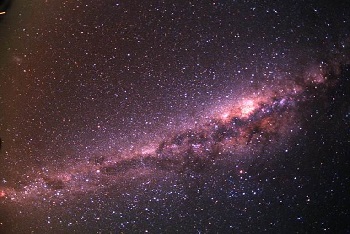
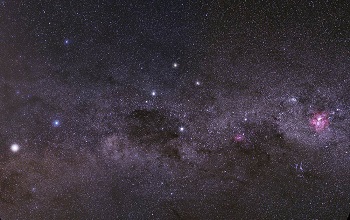

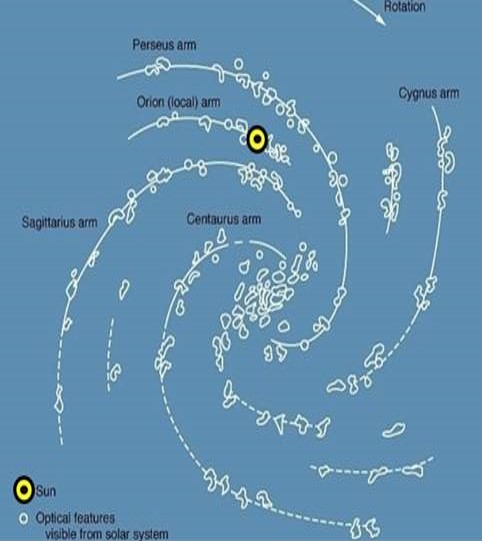
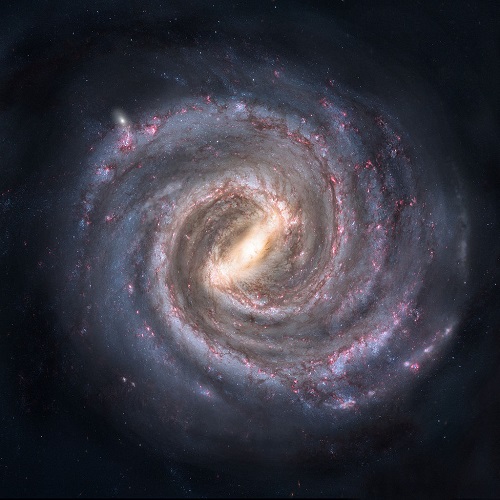

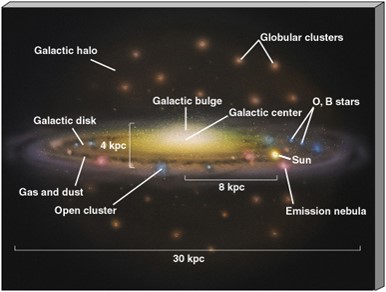
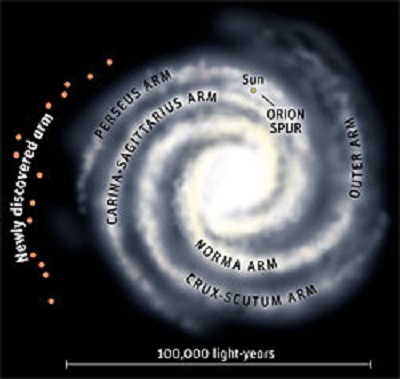
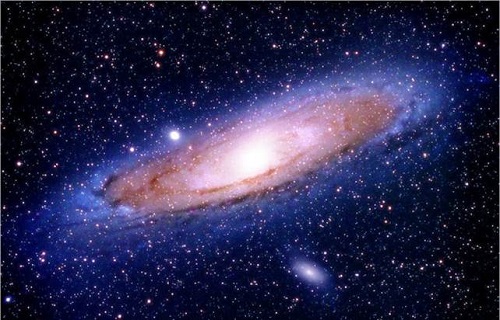
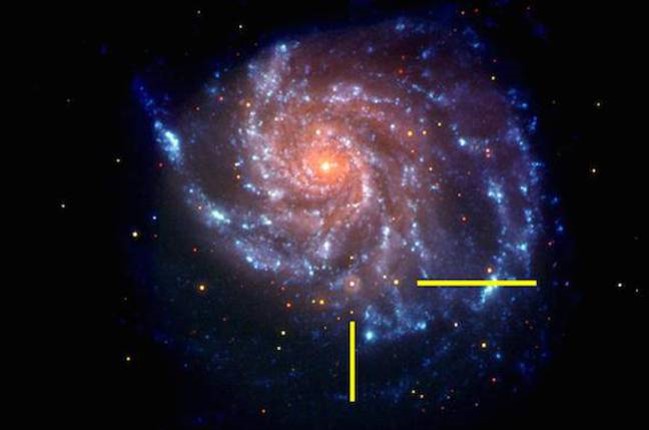

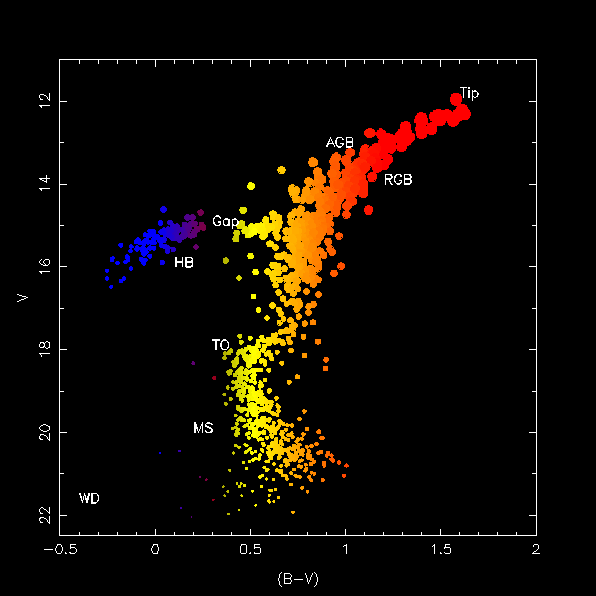
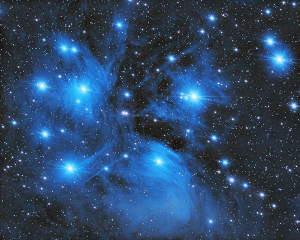
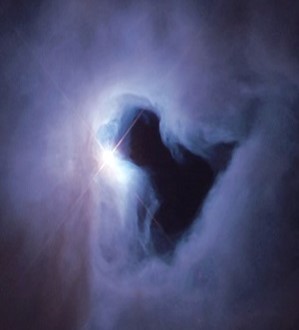

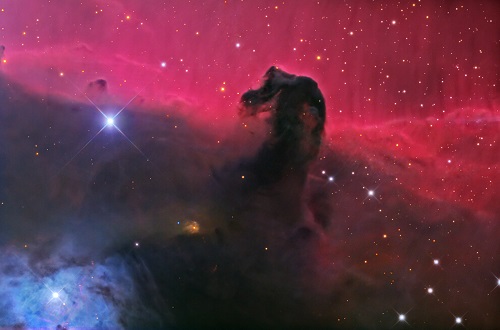
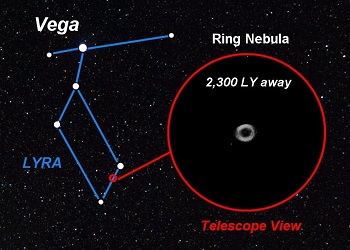
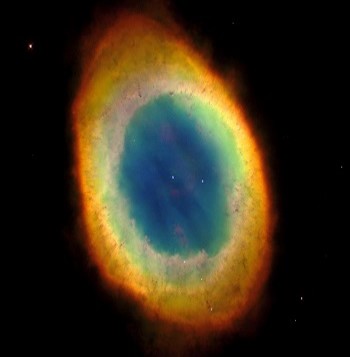
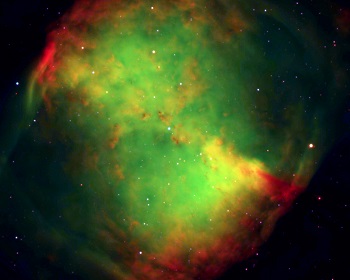


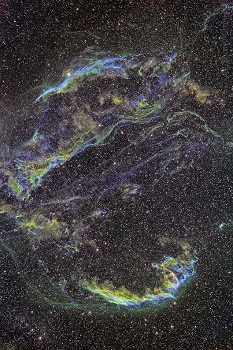
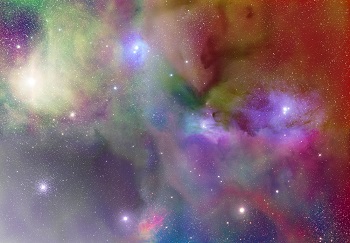

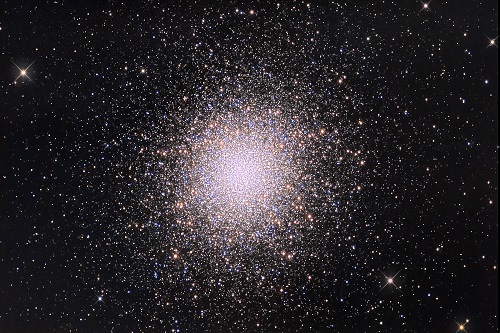
.jpg)
